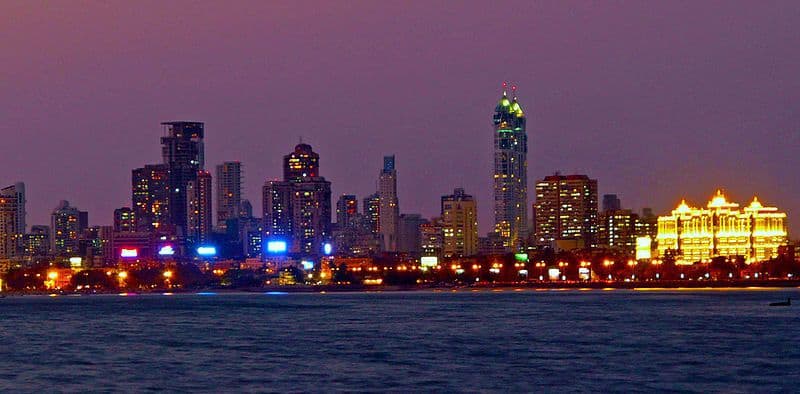Indian cities’ ongoing dilemma: To breathe or not to breathe?
With 14 of the 15 most polluted cities in the world in terms of PM 2.5 concentrations, as recorded in the recently-released WHO global air pollution database, India continues to grapple with the huge challenge of cleaning up the air in its cities.
With a PM 2.5 of 173 micrograms per cubic metre, Kanpur holds the unenviable top position in the list, followed by Faridabad, Varanasi and Gaya. The Indian capital stood at sixth position. The study considered both PM2.5 and PM10 pollution in the cities over the period 2010-2016.
The only non-Indian city featuring among the top 15 was Ali Subah Al-Salem in Kuwait. However,
“The organization (WHO) stressed that although its report provides air quality data from more than 4,300 cities and towns in 108 countries, there was an unevenness in the information received, with a dire lack of data from Africa and parts of the Western Pacific region. Only eight of the 47 countries in Africa provided air quality information about one or more of their cities. And while the database listed information on 181 Indian cities, it provided data for only nine Chinese cities.”
Meanwhile, experts are questioning the likely efficacy of the National Clean Air Action Programme (NCAP), the draft for which was released by the environment ministry earlier in April, largely due to the push from the Supreme Court. This has been criticized primarily on two counts: first, because it lacks clear targets and interim outcomes, and second, as it is largely advisory in nature. Experts from the CPR Namati Environment Justice Programme, write:
“The document proposes the creation of a wider scientific baseline to pin down the sectoral contribution on pollution by particular sectors. It proposes a network of scientific institutions to carry out studies in specific cities. Any concrete steps are to be taken only after that. These studies are not unwarranted. But there is need for immediate remedial measures.
*******
Not only does it not have any specific outcomes against which it can be assessed regularly, it lacks a positive vision to bring us clean air. It focuses on a negative approach to “control pollution,” using frameworks that have failed to deliver since the 1980s.”
Source: The Times of India | DNA | Down to Earth
Mumbai DP 2034: Focus on construction the sole metric for development?
Affordable housing, old age homes, shelters, theatres, museums, playgrounds and more…the Mumbai Development Plan 2034, officially unveiled in the last week of April – promises these and more. On the bright side of it, this is expected to create 8 million new jobs or more.
One of the key highlights of the plan has been the higher allowance for Floor Space Index (FSI), which essentially defines the height of construction permissible on a given plot of land. The new DP allows for a maximum FSI of 5 for commercial properties in the city (1.33 earlier) and suburbs (2.5 earlier), up from 1.33. The FSI for residential property in the city has also been raised to 3 and to 2.5 in the suburbs. With the thrust on vertical growth, it is expected that the Mumbai civic body may add Rs 5000 crore to its coffers by way of development charges, which is a one-time levy on new constructions, redevelopment or alterations.
But questions have already been raised on the focus on increased construction proposed, in the absence of supporting infrastructure and adequate consideration of environmental implications. There is also doubt over the possible realization of construction targets, given the Brihanmumbai Municipal Corporation’s poor track record in completing projects. As this report points out,
“Brihanmumbai Municipal Corporation Commissioner Ajoy Mehta himself admitted on Wednesday that only 20% of what the 1991 Development Plan had envisaged could be achieved. In plain terms, all the talk of creating 1 million affordable homes and 8 million jobs is likely to remain on paper because execution has been poor.”
The other controversial provision in the DP has been the opening up of over 3000 hectares of land, that was hitherto in No-development zone, for low cost housing or construction of amenities in Special Development Zone. This is in addition to another 300 acres of salt pan land that may now be utilized for affordable housing programmes. The latter has raised concerns among several environmentalists in the city. Increased flooding is one of the risks they highlight:
“Rishi Aggarwal, urban development expert and environmentalist, believes constructing on salt-pan lands would follow the Archimedes principle of buoyancy, that “if you sit in the bathtub, that much amount of water is going to be displaced.”…“Same way, if you construct on salt pans, you would take away the capacity of that land to absorb that. So it is a big concern,” he said.”
Principal Secretary to the Maharashtra Urban Development department Nitin Kareer has, however, confirmed that availability of open spaces has received adequate emphasis in the DP. No open space reservation has been removed, even as 42 hectares of additional open space is proposed to be created. In addition, the DP has also designated 12,859 hectares as natural spaces where no construction will be permitted.
Source: Firstpost | BloombergQuint | The Economic Times | Hindustan Times
Rotten Meat scare for Kolkata foodies; sales hit
Kolkata is a city known for its love for food – as much for the roadside biriyanis and mutton rolls as the fare in high-end eateries. But meat lovers, and restaurant-goers in particular, were in for a rude and nauseating shock when the city police busted a racket involved in selling meat of carcasses sourced from dump yards around the city.
Nearly 20 tonnes of rotten meat, meant to be supplied to restaurants in and around the city, were seized from a cold storage in central Kolkata. Rotting meat and sick birds were also found in raids on wholesale outlets in New Town and other areas around the city. Over a period of a few days, it was clear that there was an entire, organized enterprise selling spurious, rotting meat and chicken to eateries and frozen food outlets, possibly even across state borders.
Several people have been arrested and a Special Investigation Team appointed by the state government is currently looking into the matter. More than 10 people have been arrested so far, including the 52-year old owner of the cold storage, allegedly the kingpin of the meat trade racket
Meanwhile, most reputed restaurants have been quick to distance themselves from the scandal, claiming strict quality control measures. They do report a decline in demand for meat-based items, but add that there has been no perceptible hit on overall business. It was also reported that sale of fish across the city has gone up by 30 to 40% following the unearthing of the scam.
Source: NDTV | Firstpost | Deccan Herald
Supreme Court bans construction in illegal colonies in Delhi
The apex court has come down heavily on unauthorised colonies in Delhi and imposed a stay with immediate effect on all upcoming structures in close to 1800 such settlements. It has also ordered the Centre to remove all encroachments from public land and roads within a period of two weeks.
The SC also made it clear that even if these colonies were eventually regularized, any construction that violates building rules and by laws would not be protected. Both the Centre and the Delhi Development Authority (DDA) have agreed to follow the orders.
“The court also turned down the Centre’s plea to vacate its stay on amendments to the city’s Master Plan 2021, and asked it to “first prove its bona fide” by taking action in compliance of its order and posted the case after two weeks.”
Source: The Times of India
Big cities buy fewer cars; is it public transport or something else?
Even as the overall Indian market witnessed a surge in sales by 10%, bigger cities saw a flat or declining trend in car sales, with Mumbai and Bengaluru recording a dip in sales by 20% and 11% respectively. Delhi saw a marginal growth of 1.6% following a very low volume of sales in the base year 2016-17, when diesel cars had been banned for a period.
Fast expanding Metro rail in these cities and the convenience of app-based cabs are among the primary reasons, with traffic and parking woes also playing a major role.
“Senior industry officials also point to a small but growing trend of people not planning a second car — or even selling it. “If the woman of the house earlier had a car for household chores, she now either orders online or simply calls for an app-based cab. There is no hassle of driving, looking for a parking spot, or getting stuck in traffic,” says an industry veteran who requested anonymity. He also feels that for city-only commute relying on shared mobility makes better financial sense than owning a car.”
GST implementation is also being seen as a cause for the shift away from cars, and in particular for fewer purchases by drivers of fleet operators and shared mobility platforms.
Source: The Times of India
Aurangabad Industrial City (AURIC) eyes tall investment targets
The Maharashtra government is all set to speed up work on completion of AURIC, to be built oer 10000 acres on the outskirts of Aurangabad, conceptualized as completion of the first integrated industrial greenfield city which is also betting big on the concept of ‘Walk to Work.’
According to Chief Minister Devendra Fadnavis, the new city is expected to bring investments worth Rs 70,000 crore and create jobs for three lakh people. The government is reportedly in talks with 150 investors and vendors from Japan and South Korea.
“The Hyosung Group, which committed an investment of Rs 3,000 crore in AURIC to build factory for manufacturing spandex, has provided the anchor, he (Fadnavis) added. The group had signed the MoU with the state government during Magnetic Maharashtra on February 20.
A sub-committee, led by Prime Minister Narendra Modi, has already sanctioned Rs 6,500 crore for Bidkin and Rs 1,533 crore for Shendra for infrastructure and related developmental projects.”
Source: The Indian Express
Hyderabad municipality wins PM’s award for excellence in administration
Prime Minister Narendra Modi himself handed over the Award for Excellency in Public Administration to the Commissioner of the Greater Hyderabad Municipal Corporation at a function held in Hyderabad.
“The GHMC has got the award for its exemplary work done in the field of Housing scheme. GHMC is pursuing a relentless work of construction 1 lakh 2 Bedroom, Hall, Kitchen and 2 Toilet (2BHK) Dignity Housing programme, which is a flagship programme of the Telangana Government too…This is the first ever time that an organisation like GHMC is chosen out for this distiction as till now only Districts were chosen for this coveted positions.”
Source: The New Indian Express

